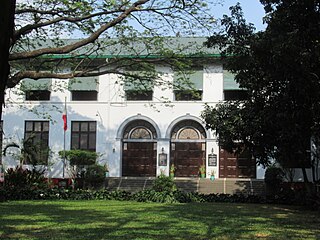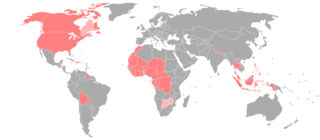Higher education

Legal protection
The Republic Act No. 7277 promotes adequate education for disabled people in the Philippines. [33] This act declares, among other things:
- Section 5: Equal Opportunity for Employment - people cannot be denied employment on the basis of disability
- Section 6: Sheltered Employment - if disabled people can't find employment, they are ensured to find a stable job in their field of interest through sheltered employment
- Section 8: Incentives for Employers - private companies must provide accommodations for their disabled employees
- Section 9: Vocational Rehabilitation - the Philippine government will provide vocational training to disabled people for skill development
- Section 10: Vocational Guidance and Counseling - disabled people will be supplied resources and counselors for vocational training
- Section 12: Access to Quality Education - the Philippine government will provide equal access to quality education, and it is unlawful to deny a student admission to school on a basis of disability
- Section 13: Assistance to Disabled Students - the Philippines government must supply finance assistance to disabled students pursuing postsecondary school
- Section 14: Special Education - public schools must supply adequate special education (SPED) programs, funded by the Philippine government
- Section 17: State Universities and Colleges - colleges are responsible for providing required assistance, vocational training materials, and research on elimination of discrimination of disabled people
- Section 26: Access to Public Transport Facilities - the Philippine government will develop and fund a program to help disabled people access public transportation
Deaf postsecondary schools
| CAP College School for the Deaf [34] | DLS-College of St. Benilde [35] | Cebu State College of Science and Technology [36] | MCCID College of Technology [37] | |
|---|---|---|---|---|
| Location(s) | Manila, Luzon | Manila, Luzon Antipolo, Rizal | Cebu City, Cebu (main) | San Mateo, Rizal |
| Founded in (year) | 1989 | 1988 | 1911 | 1993 |
| Funded | by the Philippine government [38] | by the Philippine Government [38] | privately [38] | privately [38] |
CAP College School for the Deaf
Starting off as the CAP College Foundation, the CAP College School for the Deaf prioritizes developing employment skills, advocating for the Deaf community, self-reliance and independence, and improving the socio-economic status of Deaf people. [34]
They offer degrees in: [34]
- Associate's in Artis in Information Technology, and
- Bachelor of Science in Business Administration
De La Salle (DLS)-College of St. Benilde
The DLS-College of St. Benilde prioritizes catholic heritage, societal service, and accessibility to education. [39]
They offer multiple undergraduate programs, including: [40]
- School of Arts, Culture, and Performance
- School of Deaf Education and Applied Studies
- School of Diplomacy and Governance
- School of Environment and Design
- School of Hotel, Restaurant and Institution Management
- School of Management and Information Technology, and
- School of New Media Arts
Cebu Technical University
Previously known as Cebu State College of Science and Technology, Cebu Technological University has nine satellite campuses in Argao, Babag, Barili, Carmen, Daanbantayan, Danao City, San Francisco, Maolboal, and Tuburan. [36] There are also thirteen extension campuses in Balamban, Bantayan, Dumanjug, Ginatilan, Malabuyoc, Naga, Oslob, Pinamungahan, Samboan, San Fernando, San Remigio, Tabogon, and Tabuelan. [36]
Their main campus in Cebu City has multiple undergraduate programs, including: [41]
- College of Arts and Sciences
- College of Computer, Information and Communications Technology
- College of Management and Entrepreneurship
- College of Engineering
- College of Education, and
- College of Technology
Manila Christian Computer Institute for the Deaf (MCCID) College of Technology

MCCID College of Technology prioritizes sign languages, Christian values, recreational activities, and job assistance. [37]
They offer classes in-person and online in the following programs: [42]
- Diploma in Arts and Computer Design Technology for the Deaf (DACDT)
- Diploma in Business Technology for the Deaf (DBT)
- One-Year Certificate in Sign Language and Interpreting Course (CSLI)
- Five-Month Computer Software Operation Technology Course (CSOT)
- Free Deaf Sensitivity Training
- Online Sign Language Live Tutorials
- Online Advanced Sign Language Live Tutorials, and
- Online Filipino Sign Language Live Tutorials






